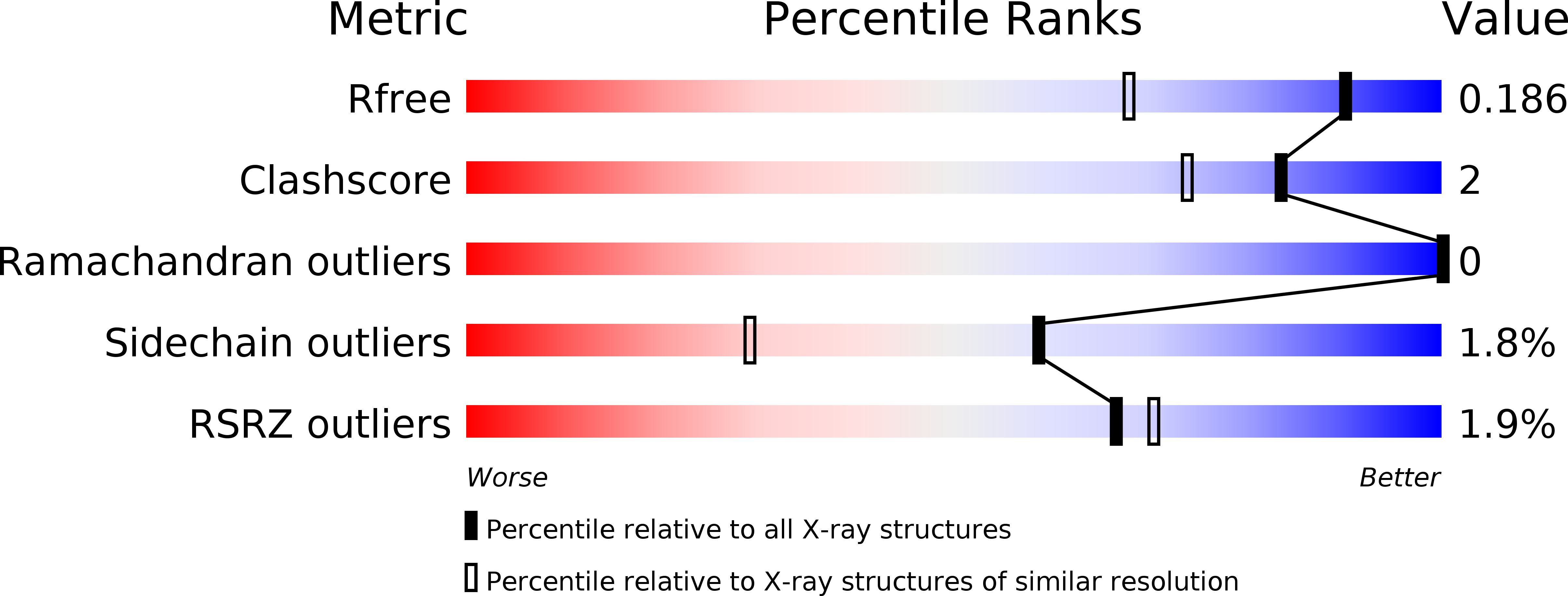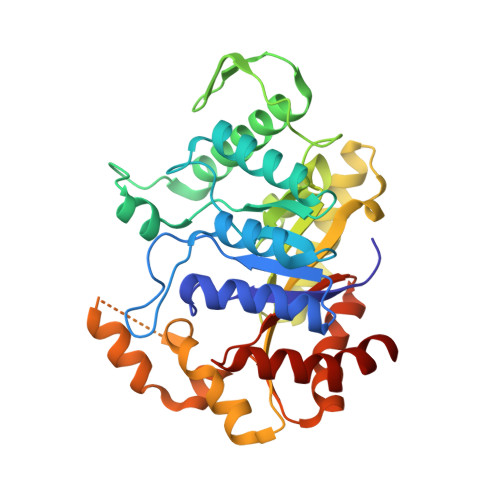Discovery and characterization of an F420-dependent glucose-6-phosphate dehydrogenase (Rh-FGD1) from Rhodococcus jostii RHA1.
Nguyen, Q.-T., Trinco, G., Binda, C., Mattevi, A., Fraaije, M.W.(2017) Appl Microbiol Biotechnol 101: 2831-2842
- PubMed: 27966048
- DOI: https://doi.org/10.1007/s00253-016-8038-y
- Primary Citation of Related Structures:
5LXE - PubMed Abstract:
Cofactor F 420 , a 5-deazaflavin involved in obligatory hydride transfer, is widely distributed among archaeal methanogens and actinomycetes. Owing to the low redox potential of the cofactor, F 420 -dependent enzymes play a pivotal role in central catabolic pathways and xenobiotic degradation processes in these organisms. A physiologically essential deazaflavoenzyme is the F 420 -dependent glucose-6-phosphate dehydrogenase (FGD), which catalyzes the reaction F 420 + glucose-6-phosphate → F 420 H 2 + 6-phospho-gluconolactone. Thereby, FGDs generate the reduced F 420 cofactor required for numerous F 420 H 2 -dependent reductases, involved e.g., in the bioreductive activation of the antitubercular prodrugs pretomanid and delamanid. We report here the identification, production, and characterization of three FGDs from Rhodococcus jostii RHA1 (Rh-FGDs), being the first experimental evidence of F 420 -dependent enzymes in this bacterium. The crystal structure of Rh-FGD1 has also been determined at 1.5 Å resolution, showing a high similarity with FGD from Mycobacterium tuberculosis (Mtb) (Mtb-FGD1). The cofactor-binding pocket and active-site catalytic residues are largely conserved in Rh-FGD1 compared with Mtb-FGD1, except for an extremely flexible insertion region capping the active site at the C-terminal end of the TIM-barrel, which also markedly differs from other structurally related proteins. The role of the three positively charged residues (Lys197, Lys258, and Arg282) constituting the binding site of the substrate phosphate moiety was experimentally corroborated by means of mutagenesis study. The biochemical and structural data presented here provide the first step towards tailoring Rh-FGD1 into a more economical biocatalyst, e.g., an F 420 -dependent glucose dehydrogenase that requires a cheaper cosubstrate and can better match the demands for the growing applications of F 420 H 2 -dependent reductases in industry and bioremediation.
Organizational Affiliation:
Molecular Enzymology Group, Groningen Biomolecular Sciences and Biotechnology Institute, University of Groningen, Nijenborgh 4, 9747 AG, Groningen, The Netherlands.
















